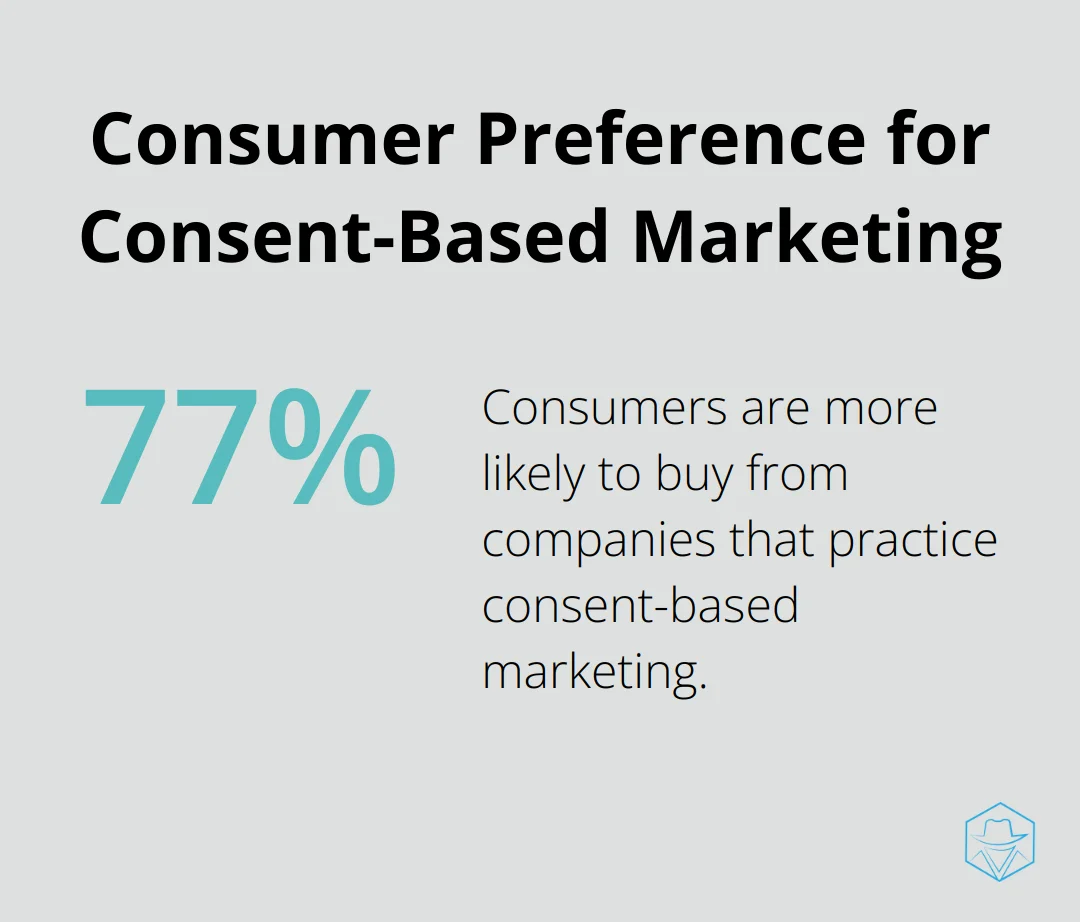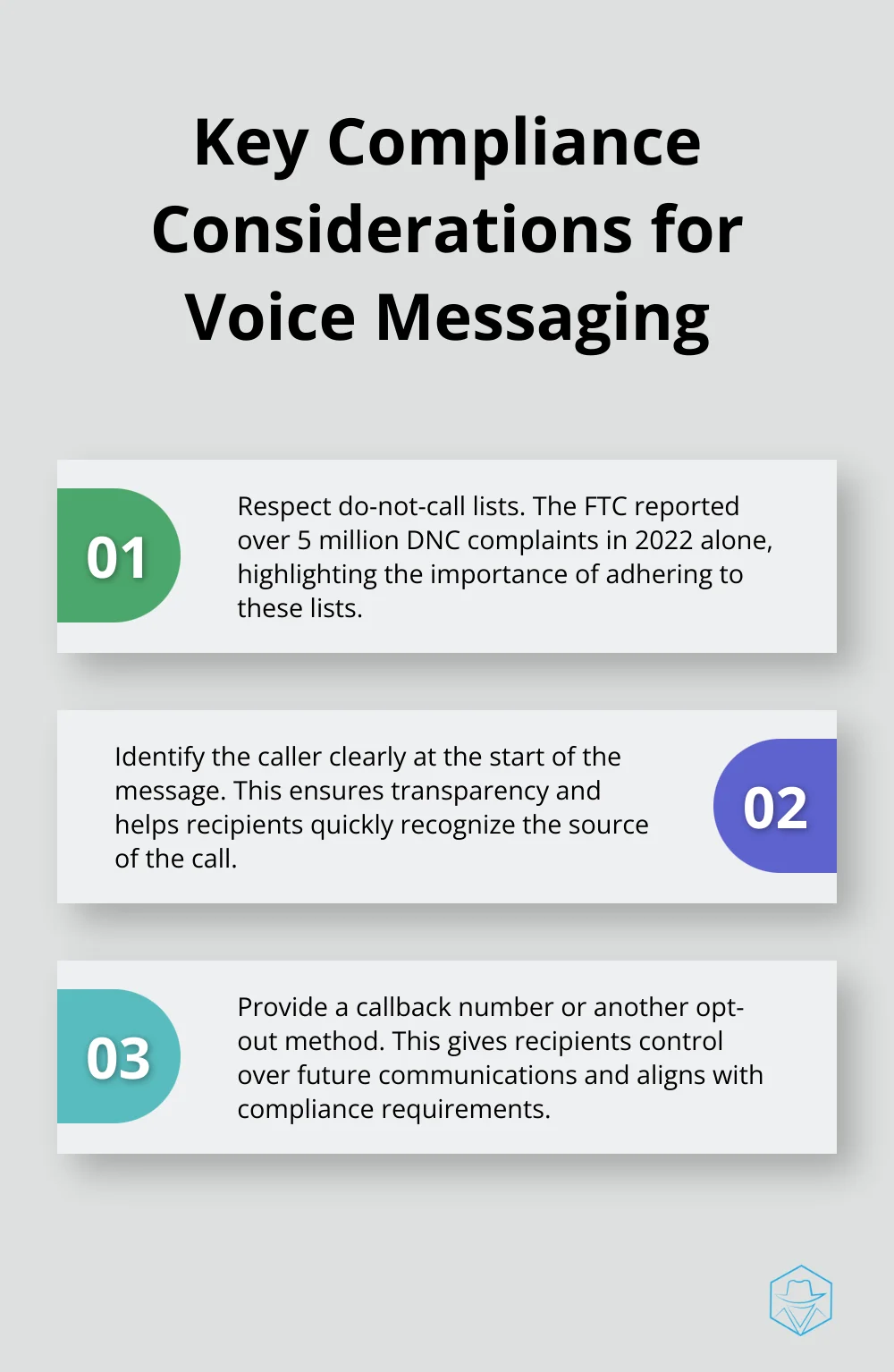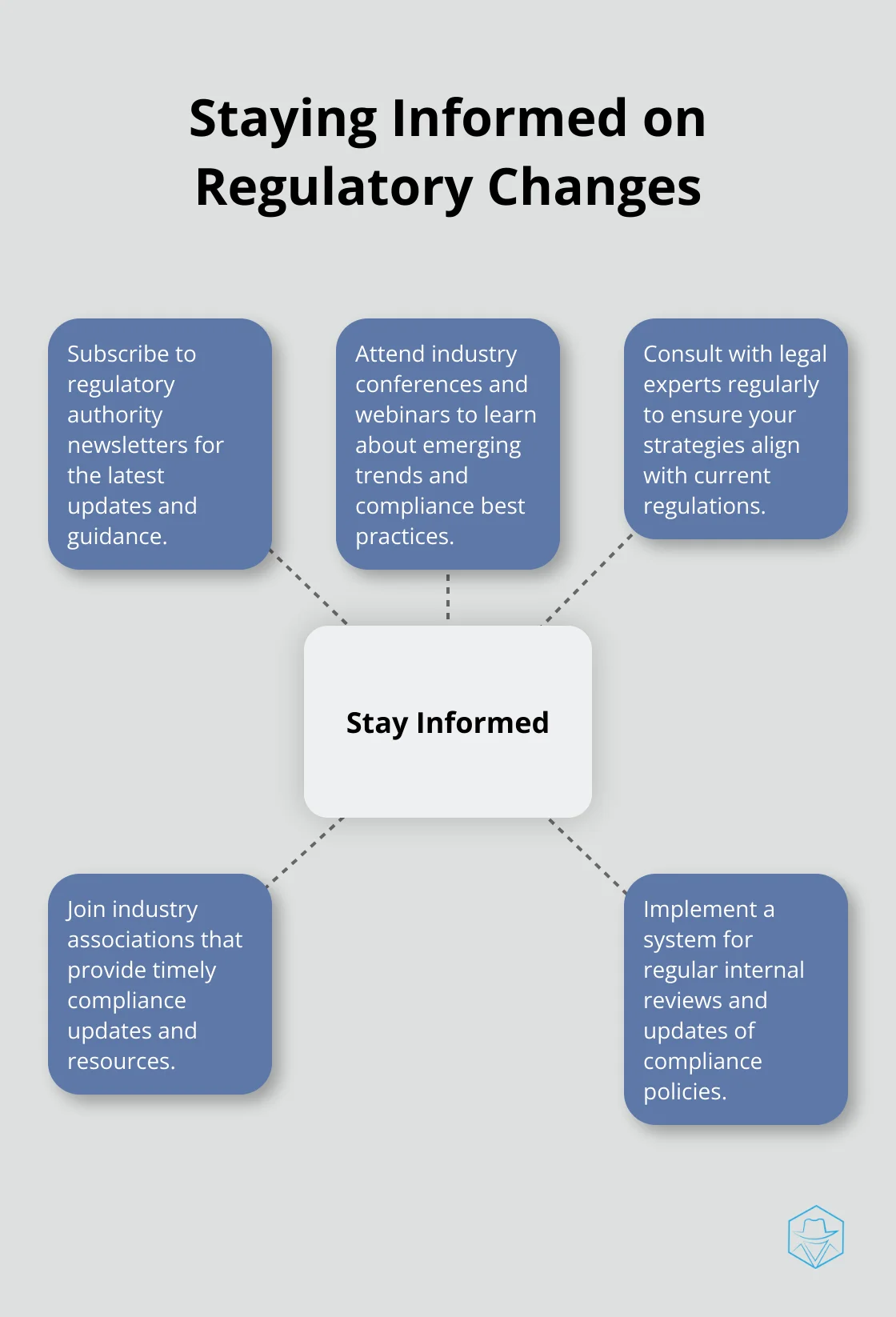Navigating Global Compliance in Multi-Channel Messaging

At Drop Cowboy, we understand the complexities of global compliance in multi-channel messaging.
As businesses expand their reach across borders, navigating the intricate web of regulations becomes increasingly challenging.
This blog post explores the key aspects of global compliance in SMS, voice, and email communications.
We’ll provide practical strategies to help you stay compliant while maximizing the effectiveness of your multi-channel messaging campaigns.
What is Multi-Channel Messaging Compliance?
The Multi-Channel Messaging Landscape
Multi-channel messaging involves communication with customers through various platforms such as SMS, voice calls, and email. This approach can boost customer engagement and marketing effectiveness. However, it also brings significant compliance responsibilities.
Global Compliance: A Business Imperative
Compliance in global communications isn’t just a legal requirement-it’s a business necessity. In 2022, the Federal Trade Commission (FTC) in the United States imposed fines exceeding $200 million for violations of communication regulations. This fact highlights the substantial financial risks of non-compliance.
Key Regulatory Bodies and Frameworks
Understanding the major players is essential to navigate the maze of global compliance. In the U.S., the Telephone Consumer Protection Act (TCPA) establishes strict rules for telemarketing calls and text messages. The CAN-SPAM Act governs commercial email practices.
The European Union’s General Data Protection Regulation (GDPR) has set a new global standard for data privacy. It imposes hefty fines (up to €20 million or 4% of global annual turnover) for non-compliance.
Practical Steps for Compliance
- Consent Management: Obtain explicit consent before sending marketing messages. A study by the Data & Marketing Association found that 77% of consumers are more likely to buy from companies that practice consent-based marketing.
- Data Accuracy: Keep contact databases up-to-date. IBM estimates the cost of bad data to U.S. businesses alone at $3 trillion per year.
- Compliance Checks: Use automated compliance checks. Tools that ensure messages comply with regulations across multiple countries can prove invaluable.

The Impact of Non-Compliance
Non-compliance can lead to more than just fines. A 2023 study by Ponemon Institute revealed that 65% of consumers lose trust in a company after a data breach. This loss of trust can have long-lasting effects on brand reputation and bottom line.
The complexities of multi-channel messaging compliance don’t end here. Each communication channel presents its own unique set of challenges and regulations. In the next section, we’ll explore these channel-specific compliance considerations in detail.
Navigating Channel-Specific Compliance Hurdles
SMS Compliance: Beyond Opt-ins
SMS marketing packs a punch, but it comes with strict regulations. The Telephone Consumer Protection Act (TCPA) in the U.S. requires explicit consent for SMS marketing. This is just the tip of the iceberg.
CTIA reports that users read 94% of SMS messages within 3 minutes of receipt. This high engagement rate attracts marketers but also increases non-compliance risks.
To comply with SMS regulations:
- Get clear, written consent before sending marketing messages.
- Include an easy opt-out method in every message.
- Act on opt-out requests immediately. The Mobile Marketing Association identifies failure to honor opt-outs as the most frequent TCPA violation.
- Maintain accurate consent records. A 2023 FCC ruling stressed the importance of proper consent documentation.
Voice Messaging: A Compliance Balancing Act
Voice messaging compliance presents unique challenges due to varying regulations across countries and states. In the U.S., the TCPA and state-specific laws govern voice messaging practices.
Juniper Research predicts businesses will send 2.7 trillion voice messages annually by 2025. This growth highlights the need for robust compliance measures.
Key compliance considerations for voice messaging include:

Email Marketing: CAN-SPAM Act Navigation
The CAN-SPAM Act in the U.S. (and similar laws in other countries) governs email marketing. Despite its age, email marketing remains effective, with the Data & Marketing Association reporting an average ROI of $42 for every $1 spent.
To ensure email marketing compliance:
- Use clear and non-deceptive subject lines. (The FTC can impose fines of up to $46,517 per email for deceptive subject lines.)
- Include a valid physical address in every email.
- Provide a clear and conspicuous unsubscribe mechanism.
- Honor unsubscribe requests within 10 business days.
Drop Cowboy has built compliance tools into its platform to help businesses navigate these complex regulations across all channels. The system automatically checks for compliance issues before sending messages, which reduces the risk of costly violations.
Compliance isn’t just about avoiding fines; it builds trust with your audience. An Edelman study found that 81% of consumers need to trust a brand before they buy from it. Prioritizing compliance invests in your brand’s reputation and customer relationships.
As we move forward, we’ll explore strategies to ensure global compliance across these diverse channels. These tactics will help you create a robust, compliant multi-channel messaging strategy that respects regulations while maximizing engagement.
How to Ensure Global Compliance in Multi-Channel Messaging
At Drop Cowby, we understand the challenges of global compliance. Let’s explore practical approaches to keep your multi-channel messaging compliant across borders.
Smart Consent Management
Consent forms the foundation of compliant messaging. The Data & Marketing Association reports that 57% of consumers feel more positive about brands when given control over their data usage.
Implement a robust consent management system that:
- Captures explicit opt-ins for each channel (SMS, voice, email)
- Stores consent data securely
- Allows easy access for audits
- Enables quick opt-out processing
Keep Your Contact Data Fresh
Outdated contact information poses a compliance risk. The Data & Marketing Association reports that customer data decays at a rate of about 30% per year.
To maintain accurate databases:
- Clean your lists regularly (at least quarterly)
- Use email verification tools to catch typos and invalid addresses
- Implement a preference center for customers to update their information
- Remove bounced emails and disconnected numbers immediately
Sending messages to outdated contacts wastes resources and increases the risk of compliance violations.
Leverage AI for Compliance Checks
Manual compliance checks take time and invite errors. AI offers a solution. Juniper Research predicts that AI-powered compliance tools will save businesses up to $8 billion annually by 2025.
Look for platforms that offer:
- Real-time compliance checks before message send
- Automatic updates to reflect changing regulations
- Multi-jurisdictional rule sets for global campaigns
Build Trust Through Compliance
Compliance builds trust with your audience. A study by Edelman found that 81% of consumers say they need to trust a brand to buy from it.
Compliance might seem daunting, but the right tools and approach turn it into a competitive advantage. It allows you to reach your audience effectively while respecting their privacy and preferences.
Stay Informed on Regulatory Changes
The regulatory landscape evolves constantly. Stay ahead by:

Proactive compliance management (not just reactive responses to new regulations) sets your business apart in the crowded messaging landscape.
Final Thoughts
Global compliance in multi-channel messaging presents complex challenges for modern businesses. Each communication channel-SMS, voice, and email-requires adherence to specific regulations and best practices. Companies must implement robust compliance strategies across all channels to succeed in this dynamic landscape. The regulatory environment changes rapidly, and businesses must stay informed to adapt their strategies proactively.
Compliance in multi-channel messaging offers benefits beyond avoiding fines. It builds customer trust, enhances brand reputation, and contributes to business growth. Companies that view compliance as an opportunity gain a competitive edge in the market. At Drop Cowboy, we understand these challenges and offer tools to help businesses navigate the complexities of global compliance.
Our platform includes features for automated compliance checks and efficient message delivery across multiple channels. We empower businesses to engage customers effectively while meeting regulatory requirements. Global compliance respects customers and builds lasting relationships. The right tools and strategies create a compliant, effective multi-channel messaging approach that resonates with your audience and drives business success.
blog-dropcowboy-com
Related posts

July 20, 2025
Outreach vs HubSpot: Sales Engagement Tools Compared
Compare Outreach vs HubSpot for sales. Find out which tool boosts engagement, efficiency, and results. Explore powerful features and user insights.

July 20, 2025
Omnisend: Ecommerce Marketing Automation Made Easy
Learn how Omnisend simplifies ecommerce marketing automation. Improve engagement and conversions with insights tailored for the real estate sector.

August 22, 2025
Unlock the Power of SMS Analytics for Better Campaigns
Enhance campaigns with SMS analytics. Learn how real-time insights boost engagement and increase conversion rates today.

April 17, 2025
Revolutionize Your Agency with Marketing Automation
Transform your business with marketing agency automation. Explore practical tips and boost efficiency to drive growth in your agency today.

May 6, 2025
Constant Contact or HubSpot: Best Email Solution?
Compare Constant Contact vs HubSpot to identify which email solution meets your business needs effectively and boosts your marketing efforts.

August 4, 2025
Why does a call go straight to voicemail
Understand why a call goes straight to voicemail. Learn common causes like network issues or phone settings and how to fix them.